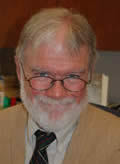
Responsible finance has been an awkward subject for Christians at least since Jesus attended that dinner party in Bethany where one of his hostesses poured a pint of rare spikenard (worth roughly a year’s salary for the average Palestinian wage earner those days) over his feet and wiped them with her hair. Saint John’s report of Mary’s extravagance includes the wonderfully superfluous detail that “the house was filled with the fragrance of the oil.” When Judas Iscariot complained about the fiscal irresponsibility of the whole thing, Jesus told him to leave Mary alone.
More recently, a wealthy woman visiting the Catholic Worker House in New York City underwent a similar paroxysm of largesse, removing a diamond ring from her hand and giving it to Dorothy Day, who thanked her and put the gift in her pocket. A few hours later Dorothy gave the ring to a mentally ill shopping-bag lady who was a regular at the house, causing one of the staff members to mutter that it might have been a better idea to sell the ring and pay the homeless woman’s rent for a year or so. Dorothy replied that the ring was a gift with which the shopping-bag lady could do whatever she liked. She could sell it and pay rent or buy groceries or take a trip to the Bahamas. Or she could keep it and enjoy wearing it just as the woman who gave it away once had. “Do you suppose,” Dorothy asked the staff member, “that God created diamonds only for the rich?”
Much more recently, when the Archdiocese of Los Angeles began building its new Cathedral of Our Lady of the Angels, Jeff Dietrich and other members of the Los Angeles Catholic Worker’s skid-row community led nonviolent efforts to disrupt the nearly $190 million construction project. Their objection, said Dietrich, was “not about worship spaces or cathedrals or aesthetics: It is about symbolism. In a church that claims sacramental sensitivity and allegiance to a God who was born in a bovine feeding trough and died the hideous death of a criminal on the cross, it is symbolically and sacramentally scandalous to memorialize his life with a grand edifice. If Betsy Bloomingdale [one of the Archdiocesan benefactors] gave the Catholic Worker a brand new Rolls Royce, we would refuse it simply because it bespeaks symbolic allegiance to sumptuous affluence and concomitant injustice.”
And even more recently, the Roman Catholic Diocese of Orange, California, spent more than $57 million to purchase the Crystal Cathedral, “America’s Television Church,” a massive structure of steel and glass three miles from Disneyland, recognizable to most Americans as the home of the “Hour of Power” television program hosted by Robert H. Schuller, televangelist and motivational speaker. One can only imagine the costs of the renovation the Crystal Cathedral must undergo to become the new Christ Cathedral of the Diocese of Orange, but it’s difficult to think of such expenditures as these without also thinking painfully of the $3.3 billion paid out — so far — in clergy sexual abuse settlements nationwide, $1.3 billion in California alone. What must Judas think of that? What should we?
My friend Duncan Stroik, the Notre Dame architect and editor of Sacred Architecture Journal, considers the Crystal Cathedral renovation project in fascinating editorial, Quo Vadis, which appears in the journal’s spring issue and is well worth reading in full. Duncan notes that diocesan officials have said they will not significantly alter the exterior of the church nor its 2,700-seat interior. “Yet, without a radical transformation,” Duncan writes, “the building will always come across as a technological mega-church rather than as a sacred place. It needs to be totally gutted and reconceived. And even if the interior can be functionally retrofitted for Catholic liturgy, many believe that its identity will always be that of the Crystal Cathedral.”
As an ordinary Catholic churchgoer admitting to architectural, economic and liturgical incompetence, I nevertheless agree with Duncan that the Crystal Cathedral needs a radical transformation, and I hope the Catholics of Orange County think so, too.
The transformation of Crystal Cathedral into Christ Cathedral is a daunting challenge for an architect and for the whole Church as well. And as long as it will incur the disapproval of the fiscally responsible, it may as well, like that dinner party in Bethany, include the spilling of some costly spikenard.
Couldn’t a sermon in stone, glass and steel accommodate the inclusion of a splendid dining hall where the deserving and undeserving poor were treated as guests, received as Christ, and served a delicious and healthy meal once a day, no questions asked? Couldn’t a place where people from all over the world came to adore and consume the Lord in the Eucharist include the world’s best-stocked and most efficiently run food pantry? Couldn’t a shrine where heartbroken people came to confess their sins and receive the Lord’s pardon and mercy also be a place where rudimentary medical care could be taken of those who would otherwise have to do without? Couldn’t a major task of the Cathedral staff be a canvas of the highways and byways of southern California to find people who starve, suffer, rave and languish, and to bring them there for a glimpse of the Kingdom. Isn’t that what a cathedral is for?
Homilies on the sacredness of human life and the indispensability of religious freedom might seem less lame if they were preached in a building where human life was being truly revered and religious freedom was being truly exercised. They might even be worth televising.
Michael Garvey is Notre Dame’s assistant director of public relations. Email him at garvey.2@nd.edu.